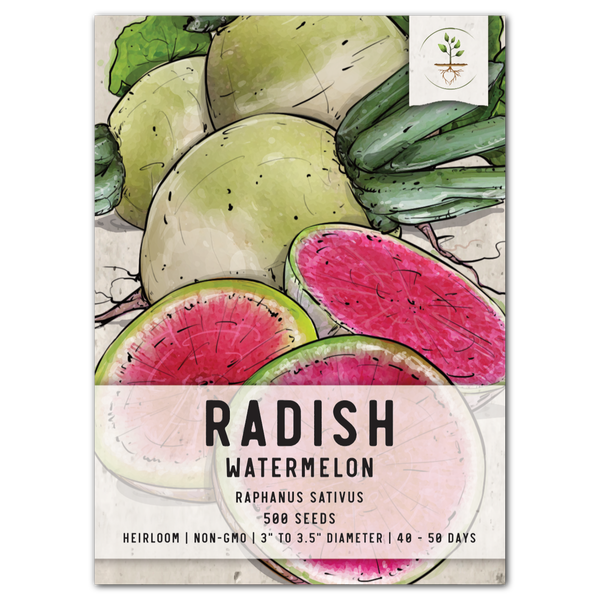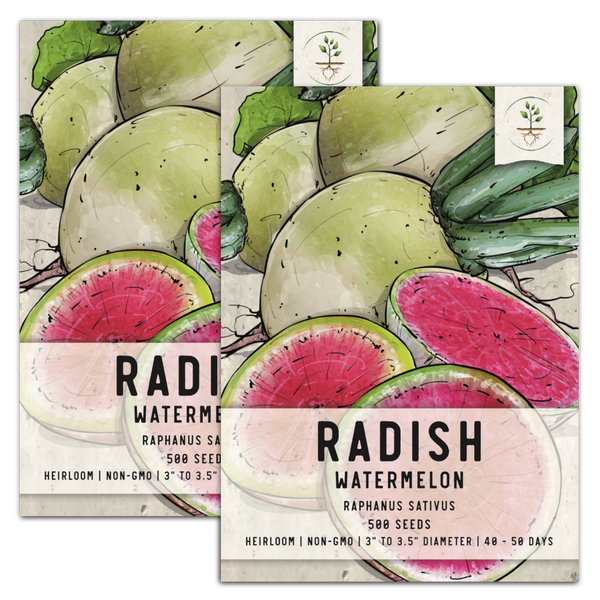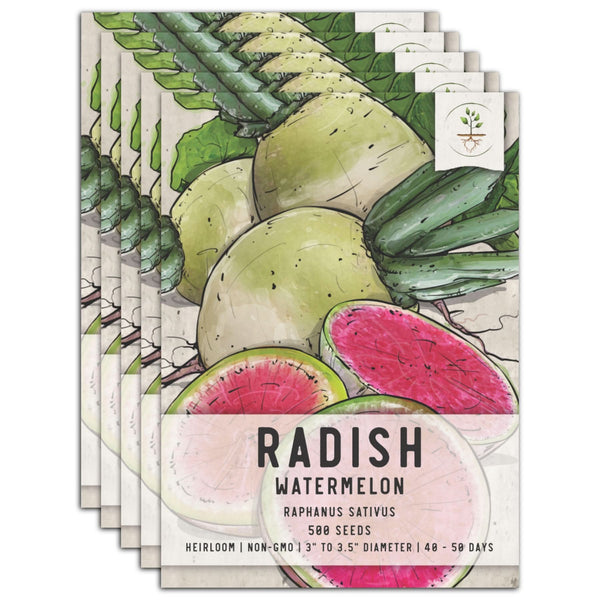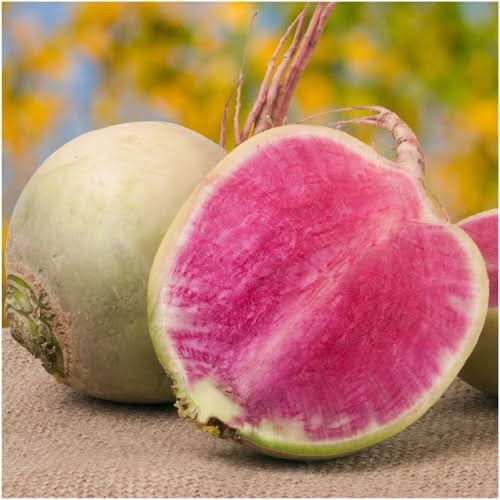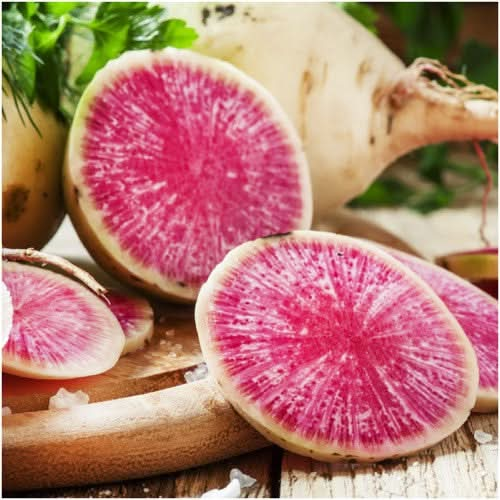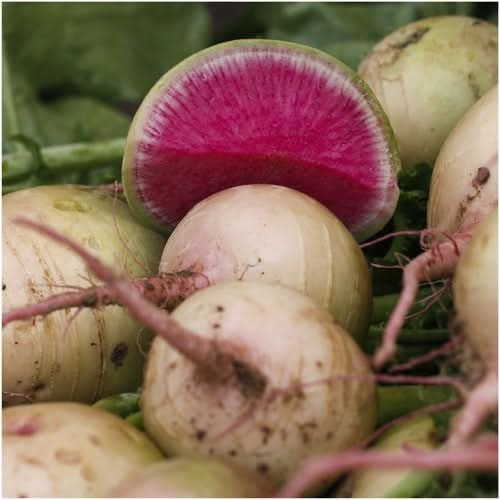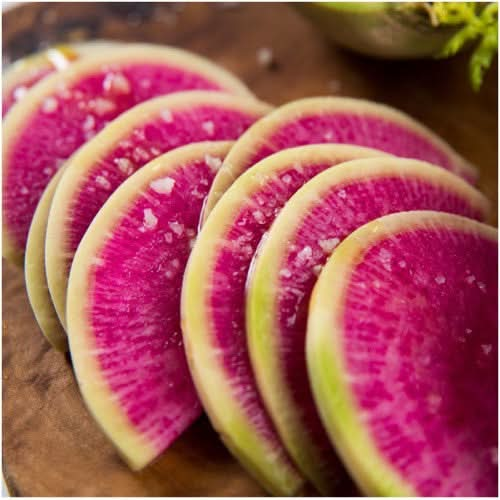Watermelon radishes, known for their vibrant pink interior reminiscent of a watermelon's flesh, are an heirloom variety of the daikon radish, originating from China where they are called "Shinrimei" or "beauty in the heart." These radishes, which can grow to the size of a golf ball or even a softball, have been cultivated for centuries in East Asia, prized not only for their striking appearance but also for their culinary versatility. Introduced to Western cuisine more recently, watermelon radishes have gained popularity for their mildly peppery, slightly sweet flavor, making them a favorite in both raw and cooked dishes, from salads to pickles. Historically, they've been part of traditional East Asian diets, valued for their nutritional content and unique taste, gradually becoming a symbol of culinary innovation and health in global gastronomy.



